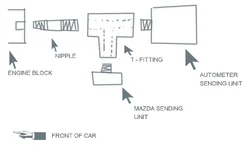okay first, don't post "do a search", I have been doing that for a freaken hour now, still no correct answer.
Any one with a MSP that has installed an Autometer Electric Oil Pressure Guage, or installed one into an MSP please help.
What wire did you hook up the ignition wire from the guage to???
thats it... thanks in advance
Any one with a MSP that has installed an Autometer Electric Oil Pressure Guage, or installed one into an MSP please help.
What wire did you hook up the ignition wire from the guage to???
thats it... thanks in advance

